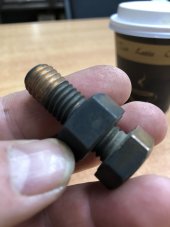BackTOschool
tellsteve2@gmail.com
- Joined
- Sep 29, 2022
- Messages
- 44
I'd still suspect a problem with the short wire, then. Have you tried, as a test, bolting the two lugs that mount to the fuse together directly? Either that, or try @Hedges' voltage drop test. The latter, done right, will be completely unambiguous as to where the problem is.
With high current flowing, use DMM to measure voltage across each contact. Lug to terminal, terminal to wire strands or far end of wire, between terminals of use, etc.
Thank you, will do. I'll let you know tomorrow.Voltage drop test is pretty easy. Take your multimeter, set it for DC volts on the lowest range it has, and start probing the wires at various close together points. Everywhere there is any kind of connection between your probes is a valid target. You should see nearly zero everywhere, but somewhere related to that short cable will probably have .3V or so. At 50A, that's 15W of heat at that connection.
Steve.



